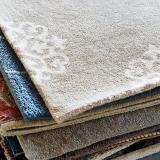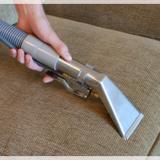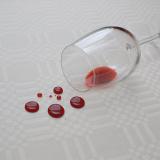Our Blog
Please feel free to post a question or just join the conversation.
Learn how flame retardants in down cushions can damage upholstery over time. Expert advice on spotting discoloration, fiber damage, and proper care.What You Should Know About Upholstery with Down Cushions
Down cushions are a hallmark of luxury furniture, offering unmatched softness and comfort. However, there’s an important issue to be aware of when down feathers are used: fire safety regulations require that the cotton covering, or “ticker,” around the down be treated with flame retardants.
How Flame Retardants Affect Upholstery
Some flame retardants are water-soluble and can break down over time into strong buffered acids. These acids can impact cellulose-based fibers such as cotton, linen, and other natural fabrics. Factors like humidity and sunlight can accelerate this chemical reaction.
Early Signs of Damage
The first visible signs usually appear as discoloration of the ticker or outer fabric, turning a brownish tone. This happens because:
The flame retardant breaks down and is absorbed into the fabric.
As humidity interacts with the acidic residue, discoloration becomes visible.
Even before discoloration appears, the acid can weaken fibers, making them brittle or stiff, and can also affect fabric dyes. A pH reading can confirm the breakdown: a ticker at pH 2 and outer fabric between pH 2–5 indicates residual acid is present.
Regulatory Updates
The Federal Trade Commission (FTC) has instructed U.S. furniture manufacturers to stop applying these flame retardants once existing stock is used. However:
Imported furniture may still contain treated tickers.
Manufacturers are not held liable for damage caused by these products.
Effects on Non-Cellulose Fabrics
Non-cellulose fabrics may show some discoloration, but in many cases, this can be restored using multiple cleanings with baking soda at room temperature.
What This Means for Consumers
Unfortunately, this is a real and ongoing problem that can damage the outer fabric of luxury upholstery. Many furniture manufacturers have since committed to avoiding flame-retardant-treated tickers due to health and safety concerns.
If you own down-filled furniture and notice discoloration or brittleness, it’s wise to consult a professional before attempting cleaning or restoration.
Need Advice?
[caption id="attachment_2740" align="alignnone" width="768"]
If you have questions about down cushions, flame retardants, or upholstery care, feel free to email me at Alec@Alecscarpetandupholsterycleaning.com. I’m happy to provide guidance and help you protect your furniture.Flame retardants in down-filled cushions can break down over time, causing discoloration and fiber damage to upholstery fabrics[/caption]
note_stackRelated Posts
- Upholstery Cleaning in Boston, MA - Upholstery Cleaning Sep 6
- Expert Upholstery Cleaning in Hingham, MA – Refresh Your Furniture - Upholstery Cleaning Sep 6
- Remove Dye Transfer from Light-Colored Furniture - Upholstery Cleaning Jan 10
- Why Professional Upholstery Cleaning Saves You Money in the Long Run - Upholstery Cleaning Dec 14
Blog Categories
-
Carpet & Upholstery Cleaning (15)
-
 Carpet Cleaning (15)
Carpet Cleaning (15)
-
 Spot Cleaning (14)
Spot Cleaning (14)
-
Uncategorized (5)
-
 About Rugs (5)
About Rugs (5)
-
 Upholstery Cleaning (5)
Upholstery Cleaning (5)
-
 About Carpets (3)
About Carpets (3)
-
Outdoor Cushion Cleaning (2)
-
 Fabric Protection (2)
Fabric Protection (2)
-
 Leather Upholstery (2)
Leather Upholstery (2)
-
 Fabrics (1)
Fabrics (1)
-
 Stains on Carpets (1)
Stains on Carpets (1)
-
 Discussions on Carpet & Upholstery (1)
Discussions on Carpet & Upholstery (1)
-
 News (1)
News (1)
